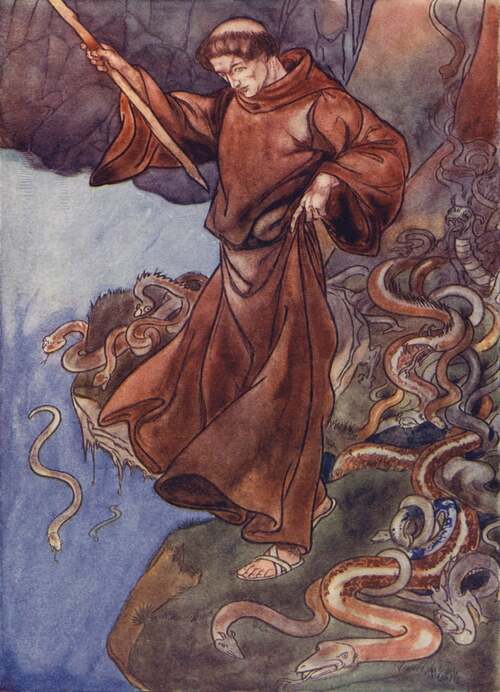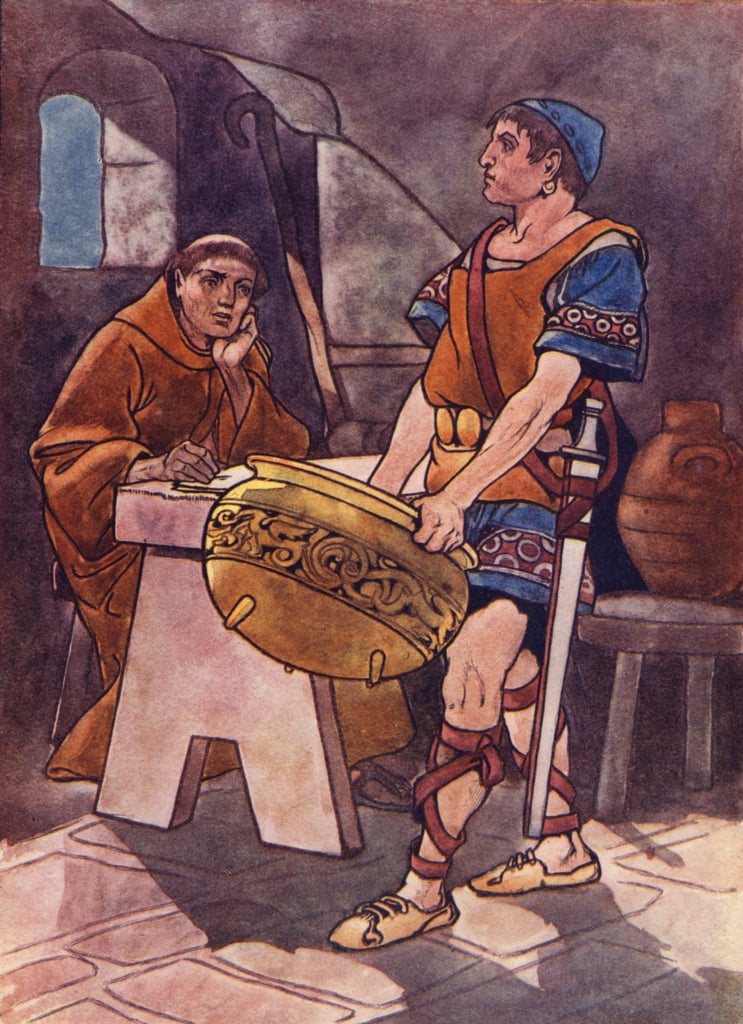-
Legends of St. Patrick
Just one legend about Saint Patrick is not enough. His life is deeply intertwined with several legends and, let's be honest, miracles. First of all, we should state that St. Patrick really lived although we don't have reliable info about any of the major facts about his life like dates or places of his birth or death.
A general image of the patron saint of Ireland can be perceived in the article: "Who was St. Patrick?"
And now let's just focus on the 10 legends about Saint Patrick:
1. When he was still trying to return home from his slavery in Ireland he and his travel companions walked for 28 days and were extremely hungry and exhausted. Patrick consoled others by convincing them they should trust in god and pray for better conditions. After his prayers, a herd of hogs crossed their path and all the problems of the group were immediately minimized. Men who traveled with Patrick started believing in his extraordinary powers.
2. As many saints he healed numerous sick and lame people. As this would not be enough another legend of St. Patrick, based on one of the documents which were supposedly written by himself, claims he resurrected many people from death, several of them already being dead for many years. He didn't specify the number of resurrections but his hagiography from the 12th century states he raised from death 33 men.
3. St. Patrick spent 40 days on the top of Cruachan Aigle (today Croagh Patrick) just like Moses did on Sinai. One of the sources from the 9th century writes about demons in the form of a flock of black birds (probably crows) attacking him but he banished them by ringing the bell. There is a similar legend claiming he was attacked by a giant serpent named Corra which he banished into the lake.
4. A well-known legend about Saint Patrick and snakes is also similar to the one with Moses in a leading role. While he was fasting on the mountain many snakes attacked him but he chased them into the sea and from then on Ireland was free of snakes. Scientists never managed to find any traces of snakes in the history of Ireland so St. Patrick should not be credited for that. Anyway, the legend is very likely based on the story about Moses and Aaron who transformed their staffs into snakes which ate the snakes sent by the pharaoh's sorcerers.
5. Patrick's attempt to convert Irish pagans to Christians was not easy. It was actually very dangerous on several occasions. Once, for instance, he and his followers were about to be attacked by Druids but St. Patrick noticed the danger right in time to transform his group into deers which elegantly escaped from angry pagans.
6. Another encounter with Druids happened at the yearly festival held by pagans all over Ireland. Druids had a tradition to lit a huge fire at the Hill of Slane and use this fire to light all other fires connected to the festival. But Patrick overtook them and lit his own fire before the pagan ceremony started. Druids tried to put out his fire and lit their own. They had no success and it is said that the High King for these reasons started believing that Patrick's magic (Christianity) was more powerful than the magic of Druids (paganism). This eventually led to the conversion of many noblemen and women in Ireland.
7. Even a more famous legend could bear more truth than others. While Patrick tried to explain the concept of the Trinity to Celtic pagans, he used his knowledge about their deepest beliefs where number three had an extremely powerful impact. He took a shamrock, today a national plant of Ireland, to show them the simple example of the Trinity - three leaves and one stem, representing three entities in on God. There is also speculation that the shamrock was a perfect example of natural regenerative powers that were connected with the idea of eternal life in Christianity.
8. St. Patrick wanted to build a church at the top of Ard Mhacha. The chieftain Daire gave him permission to build only at the lower ground. After that, his horses died after grazing in the area of the church. Daire believed it was St. Patrick's fault. He ordered his men to kill the saint. But then Daire himself became ill and St. Patrick was asked to help. Patrick not only managed to heal the chieftain with holy water but revived horses as well. Daire thanked Patrick by giving him a big bronze cauldron and permission to build at the top of the hill. The church at Armagh (today's name) became the head church of Ireland.
9. Patrick had a clash with another chieftain. His name was Crom. Patrick asked him for food and Crom sent him a bull expecting that the animal would attack the saint. Instead of that, the bull peacefully came to the holy man and allowed to be slaughtered. When Crom heard the bull was eaten he demanded it back. Patrick took the bones and the hide of the bull and brought it back to life. There are two endings of this legend. In one of them Crom was killed by the bull and in the other he was so impressed he converted to Christianity.
10. Patrick had his share of adventures with innkeepers too. Once he met a lady of the house who served her guests smaller portions than she should. He told her she had a demon in her cellar and this demon was gaining fat of her greed. She could get rid of the demon only by becoming honest. She listened to his advice and some time later he visited the same inn again. This time cups were filled with whisky to the brim. Patrick and the innkeeper went into the cellar where they saw a demon shrinking in pain until eventually disappeared in flames. After Patrick's suggestion, from then on whisky should be drunk on his feast day. This is how the tradition of drowning the shamrock on St. Patrick's Day started.
images credit: https://charlesrobinsonillustrator.blogspot.com/2024/01/patron-saints-of-great-britain-and-ireland.html Tags : st patrick legend, saint patrick miracles
Tags : st patrick legend, saint patrick miracles
-
Commentaires

